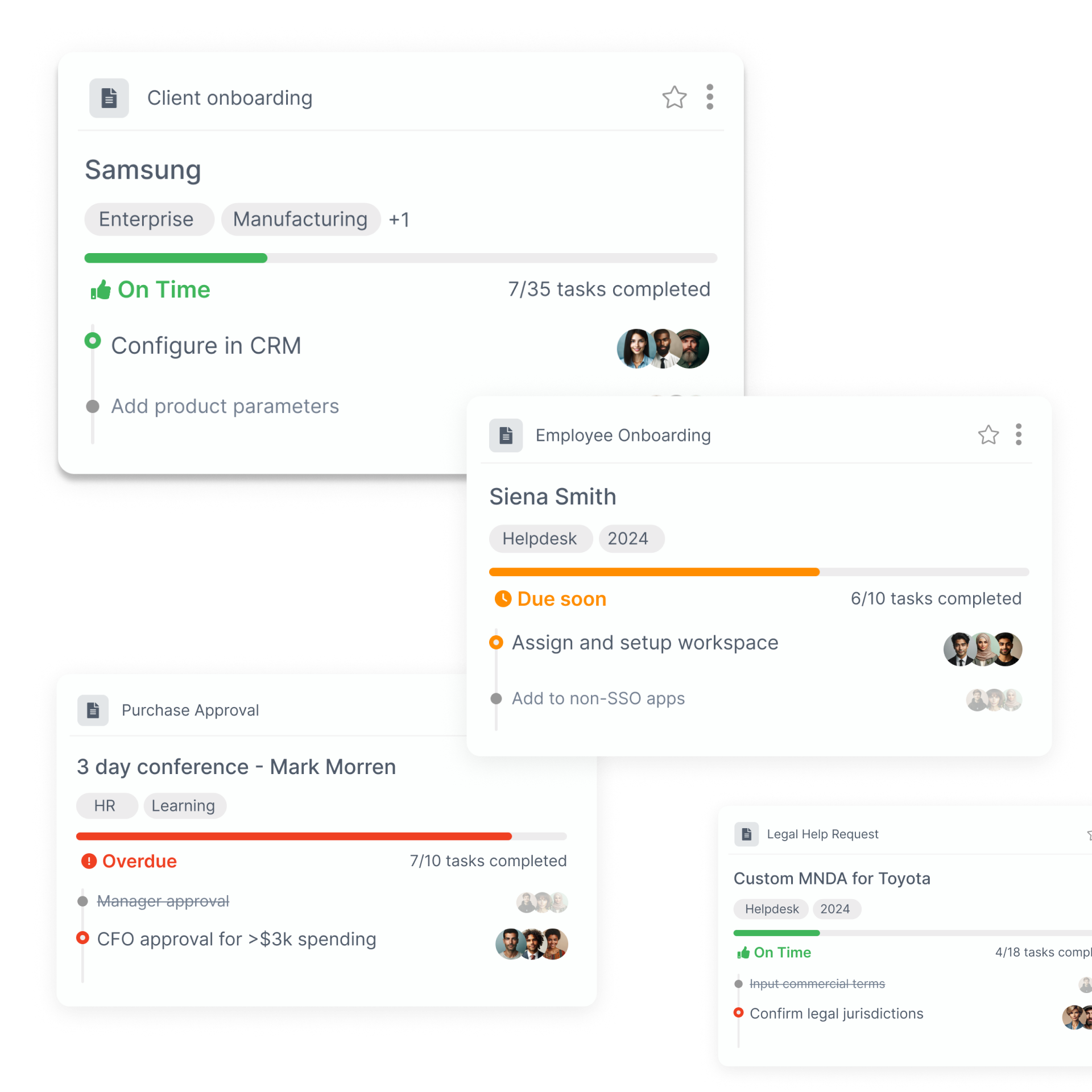Trello
Choosing the right project management tool is tough. Read on to find some great project management alternatives, as well as a Trello alternative that doesn’t see the world as Kanban.
Trello is a project management tool that many of us use. In this post, we’ll uncover the juicy details of who can get good use out of it and who can’t.
If you’re reading this, you’re likely looking for a Trello alternative. But with so many options available, there’s no way we can narrow down to one perfect Trello alternative, right?!
Wrong. We’re here to clarify for you. Read on and you may find the perfect Trello alternative for your business.
In this post, we’ll cover how Trello works (if you already use Trello, feel free to skip ahead), what makes Trello different, some project management alternatives to Trello, and a Trello alternative that isn’t a project management tool. Let’s start breaking this down.
How Does Trello Work?
Trello is a web-based project management tool that makes use of what it calls “boards.” Trello defines these boards as “lists of lists” that help your team complete projects of any size. The board is a stand-in for the project itself while these lists are the steps that the project is composed of.
It’s simple, but let me demonstrate. Below is a video, but you can just read ahead if you’d like.
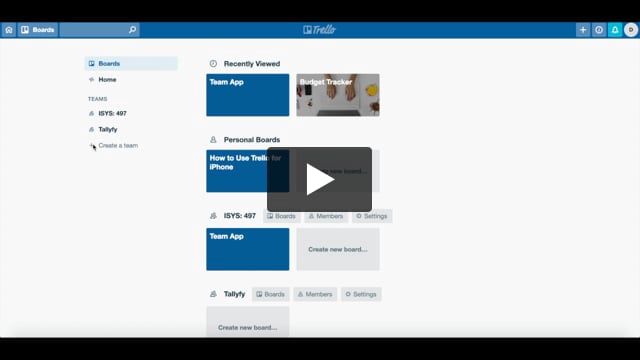
I’ve made a board called “Demo Board.” There are three lists on my example board: “To Do,” “Doing,” and “Done.” Each of these lists has a number of cards within them.
A card in this case is a step in the process of completing this project. When the user completes each task, they’ll move the task’s card on to a different list.
For example, if I begin making a Trello account, I can move the “Create a Trello Account” card from the “To Do” list to the “Doing” list. Once I finish creating a Trello account, I can then move this card to the “Done” list.
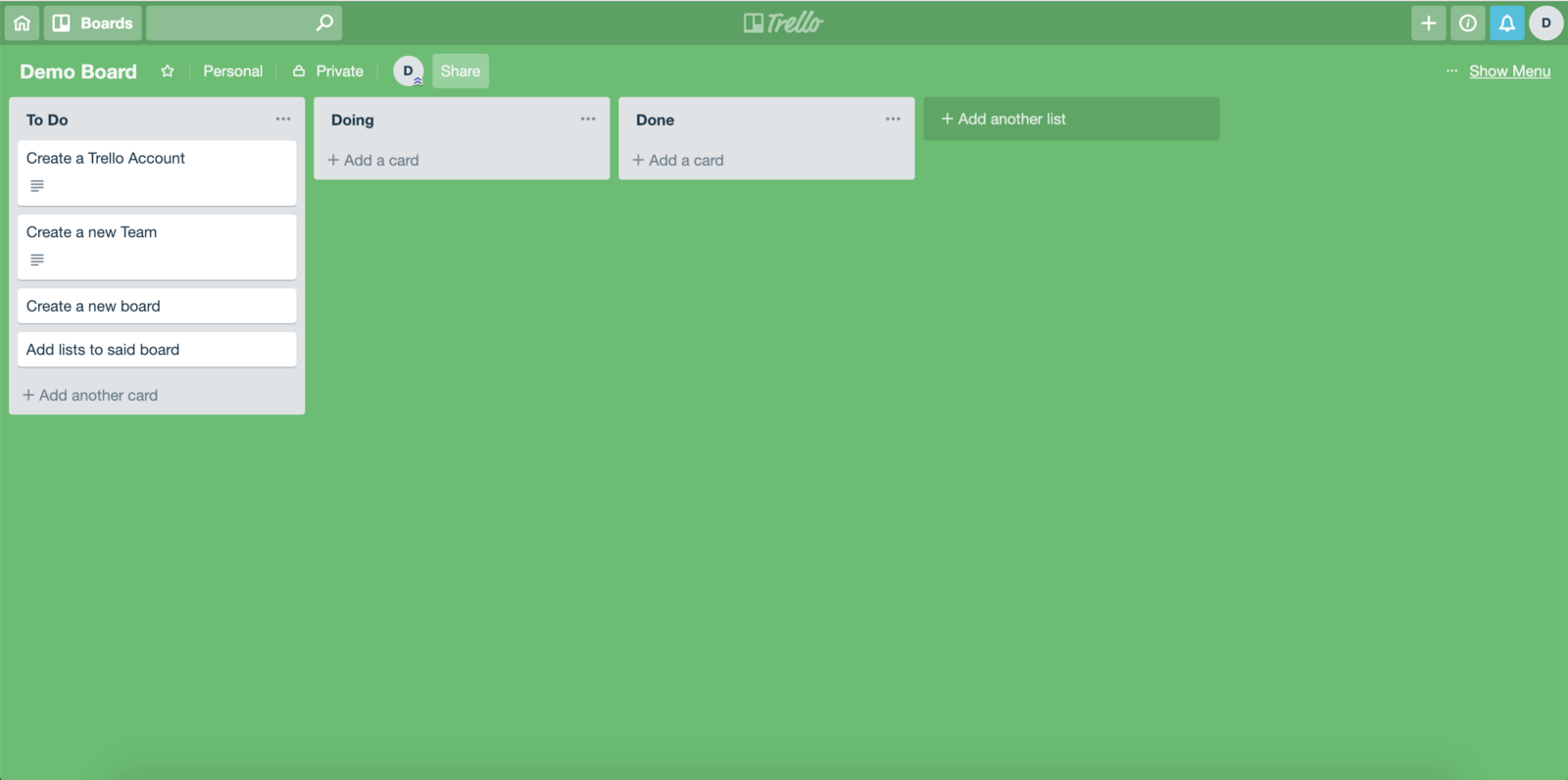
In this example, I have a number of tasks which I still have to start.
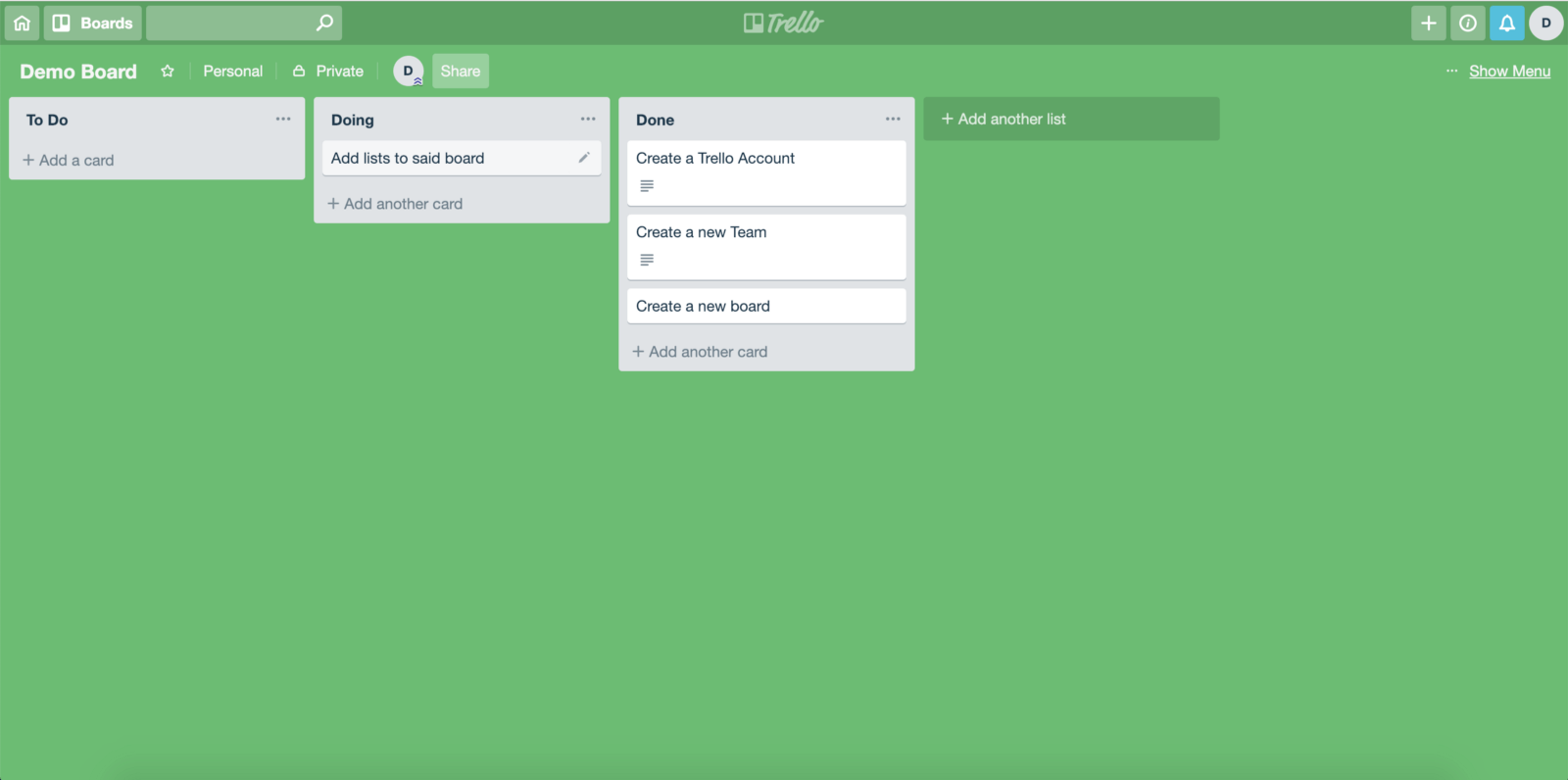
By this point, I am nearly done with this board’s project.
The value that Trello offers to users is pretty clear. It is a simple tool that can help teams organize the projects they are working on.
The above example is fairly basic. There are many things Trello does beyond moving cards from list to list. For example, the cards themselves can have attached checklists, due dates, attachments, and “Power-Ups”. Power-ups are just plugins for your Trello Cards.
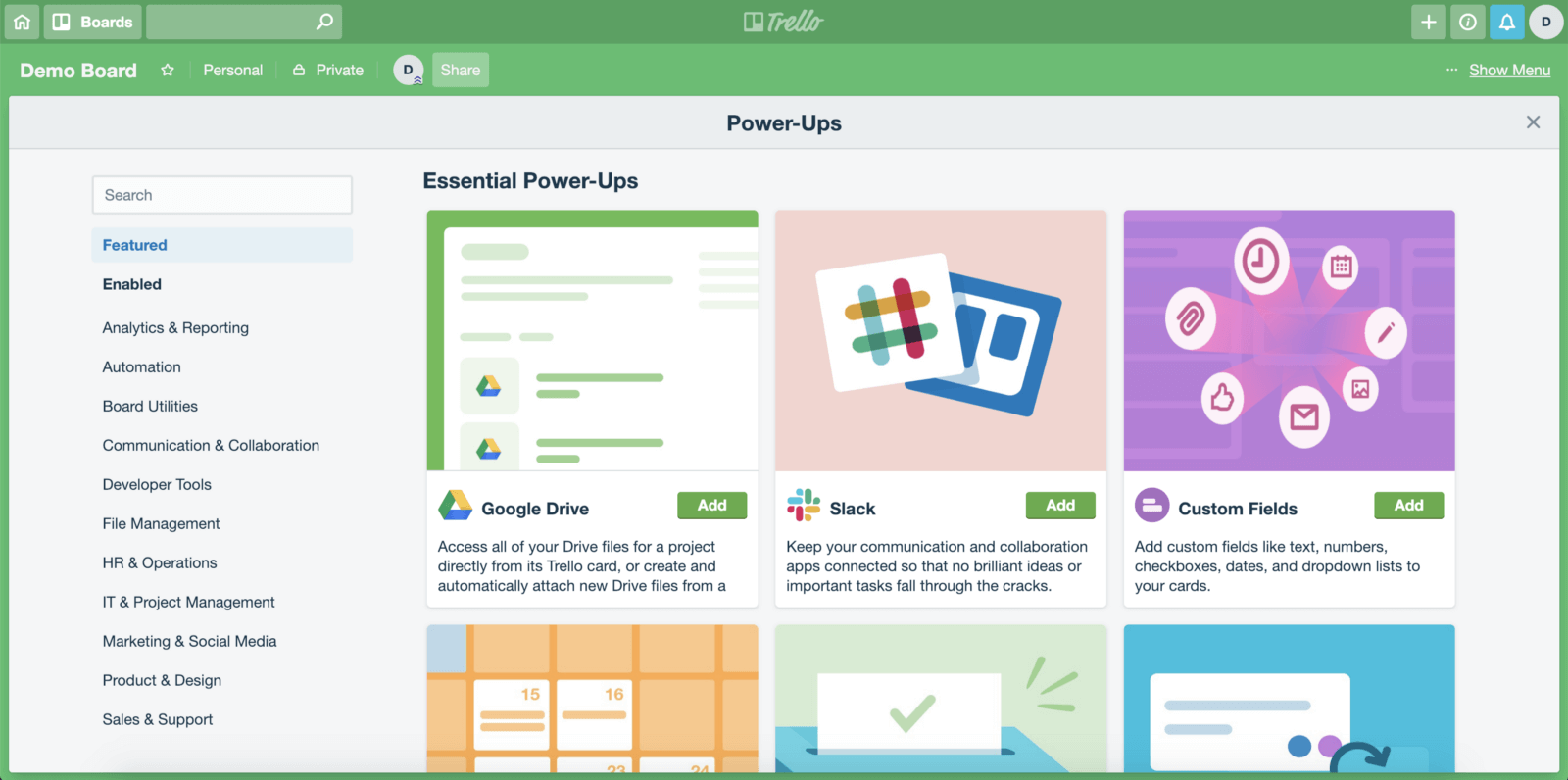
Power-Ups are like third-party plugins for your Trello projects.
Who is Trello Most Valuable To?
As a project management tool, Trello is most valuable to teams that work on a lot of projects. A project is a one-time venture that aims to create a unique product, service, or result. It is something that you won’t often repeat; one project is almost always different from the next project.
The scope of a project can vary greatly. For a social media marketing firm, a project may consist of creating a visual ad, planning when to post it for their client, and then posting this ad. For a construction company, the steps of a project include engineering the project, getting materials, and building the end result. In terms of size, these two projects are very different from one another.
I would recommend Trello to both the social media team and the construction team. Though the steps vary greatly between each project, the projects themselves have similar structures.
Although building a house may be much harder or take much longer than making an Instagram ad, they both consist of structured steps and they both could benefit from Trello. Trello tries to offer a one-size-fits-all tool for projects in any field.
What Makes Trello Different?
Flexibility — Many people like Trello for its flexibility. Though it offers paid services, the basic plan is free. Free accounts have a lot to offer, so many teams will never need to upgrade. Also, Trello runs in any web browser and offers both an iOS and an Android app. All of these factors culminate to ensure that anybody who can connect to the internet can make use of Trello’s features.
Familiarity — Trello takes features from a number of project management tools and adds them into their product. For example, when teams want to organize their thoughts, members often gather around a whiteboard and draw out the steps they’ll take from project start to project finish.
Thus, it’s no surprise that Trello projects make use of what they call “boards.” Another familiar approach that Trello adds into its product is Kanban. Kanban is a system that involves making work visual, showing it as it moves through a project. Remember the Trello Board I demoed above? The movement of cards from “To Do” to “Doing” to “Done” is a method that is taken straight from Kanban. As Kanban is a very common approach in the world of project management, this feature adds to the familiarity Trello offers its users.

Trello aims to digitize the whiteboard experience.
Collaboration — The ability to collaborate is a very important feature in a tool that manages projects. Not only does Trello make collaboration between users easy, but they also make it a fun experience. Trello has features like making boards public or private and adding checklists/deadlines to display goals between users. Trello also adds a sense of camaraderie to the project by making work seem fun. Boards are very customizable, allowing users to not only set unique backgrounds for their boards, but also allowing users to add reaction stickers to certain areas of their project. It may seem simple, but making work seem fun is one of the things that really sets this tool apart.
I can go on about the great features Trello offers, but if you’ve found this article, you’re likely looking for a Trello alternative. Let’s take a look at the options.
Why You Might Need a Trello Alternative
There are a number of reasons why teams might seek a Trello alternative. Since you’ve found this article, it’s likely you’re actively looking for a Trello alternative. While Trello has a number of great features, it is not the best fit for every team. Large teams may seek a Trello alternative because Trello is not the best project management tool for large-scale projects. Teams who need to make use of task dependencies will also seek a Trello alternative. This is because dependency management requires use of a Gantt Chart (many Trello alternatives offer Gantt charts). There are a number of other smaller details about Trello that may aggravate teams and drive them to seek a Trello alternative. Whatever the reason you’re thinking about making a switch, read on and you’ll find a perfect Trello alternative for your team.
Project Management Alternatives To Trello
With dozens of project management tools available online, there is a good chance that Trello may not be the best option for your team. At the same time, there’s no way for you to fully test every option out there, so I’ll summarize some other project management options and how they set their service apart so you can find the perfect Trello alternative.
Wrike
Wrike is similar to Trello, though it offers a wider range of features. These features may provide value for some teams while others may find that they just get in the way. Let’s take a look as to why these features make Wrike an attractive Trello alternative.
The first of these features is time tracking. Time tracking allows users to track how much time has been spent on a particular card and generate reports from the data gathered. The lack of this feature is what drives many users to find a Trello alternative.
The next feature is reporting. Reporting tools give businesses insight into key project information. This information includes things like costs and resource utilization that managers and stakeholders may find valuable.
Another important feature offered by Wrike is budgeting. Budgeting tools directly integrate the costs associated with certain tasks in a project to let users visualize where the project’s expenses are coming from. This tool includes features like alerts and reports that compare estimated and actual project costs.
While Wrike offers a number of features in its app directly, it is important to note that Trello offers many of these, and much more, via their third-party Power-Ups.
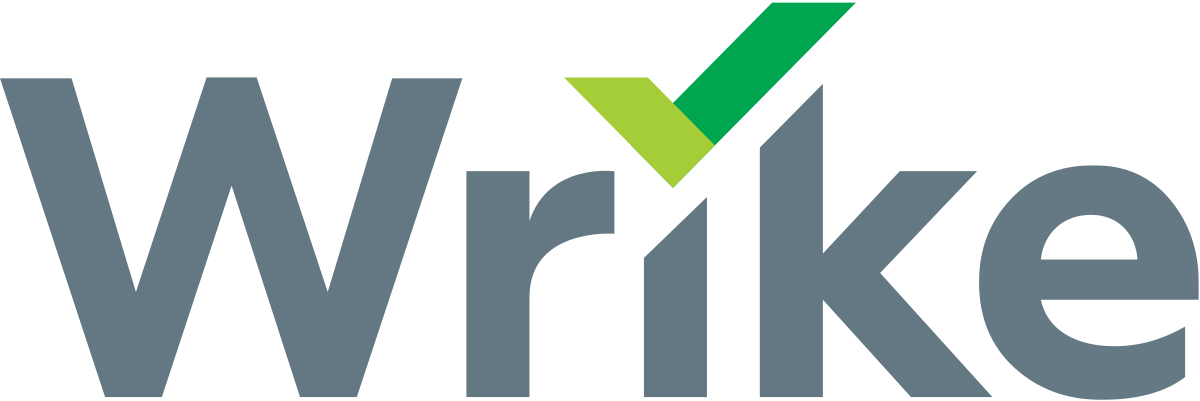
Wrike has plenty of built in project management features.
Asana
Like Wrike, Asana differs from Trello in the number of features offered. While Trello allows users to quickly get a feel for how their service works, Asana offers a wider range of features that cater towards larger and more complex projects. This is why larger organizations may find this to be an attractive Trello alternative.
An example where Asana excels is in dependency management. Dependency management is a feature that requires users to finish certain tasks before another task can begin. If a prerequisite task is taking a long time to complete, you’ve found a bottleneck in your project. Because dependency management is so useful, lack of this feature is what drives many to find a Trello alternative.
Asana projects can get too big/complicated to handle, especially if the user isn’t well-versed in project management tools. However, if the user is well-versed, Asana enables users take on projects much larger and more complex than those taken on by Trello.
So, in review, Trello is for novices or those who aren’t working on very large or very complex projects while Asana creates more value for adept project managers who are dealing with large and complex projects. If you are looking for something less simplified, Asana may be the Trello alternative for you.
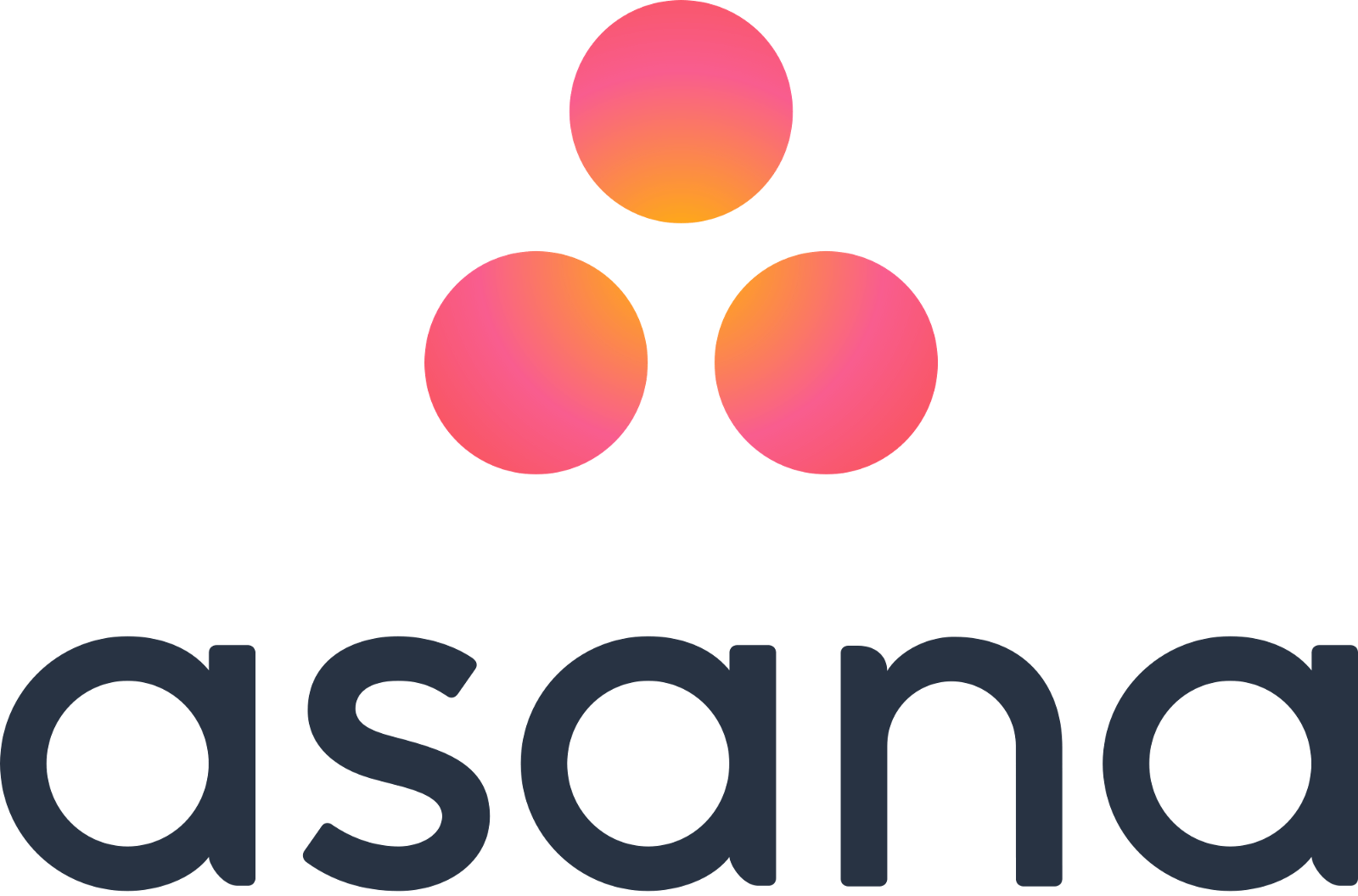
Asana can tackle bigger, more complicated projects.
Jira
Jira and Trello were made by the same company, Atlassian. But Jira has been around nearly a decade longer and offers an array of options that may be more attractive to some teams. I like to think of it as Trello’s older cousin more so than simply a Trello alternative.
I could dive into in what ways the two are similar and different, but Atlassian does a better job demonstrating why Jira can be a good Trello alternative.
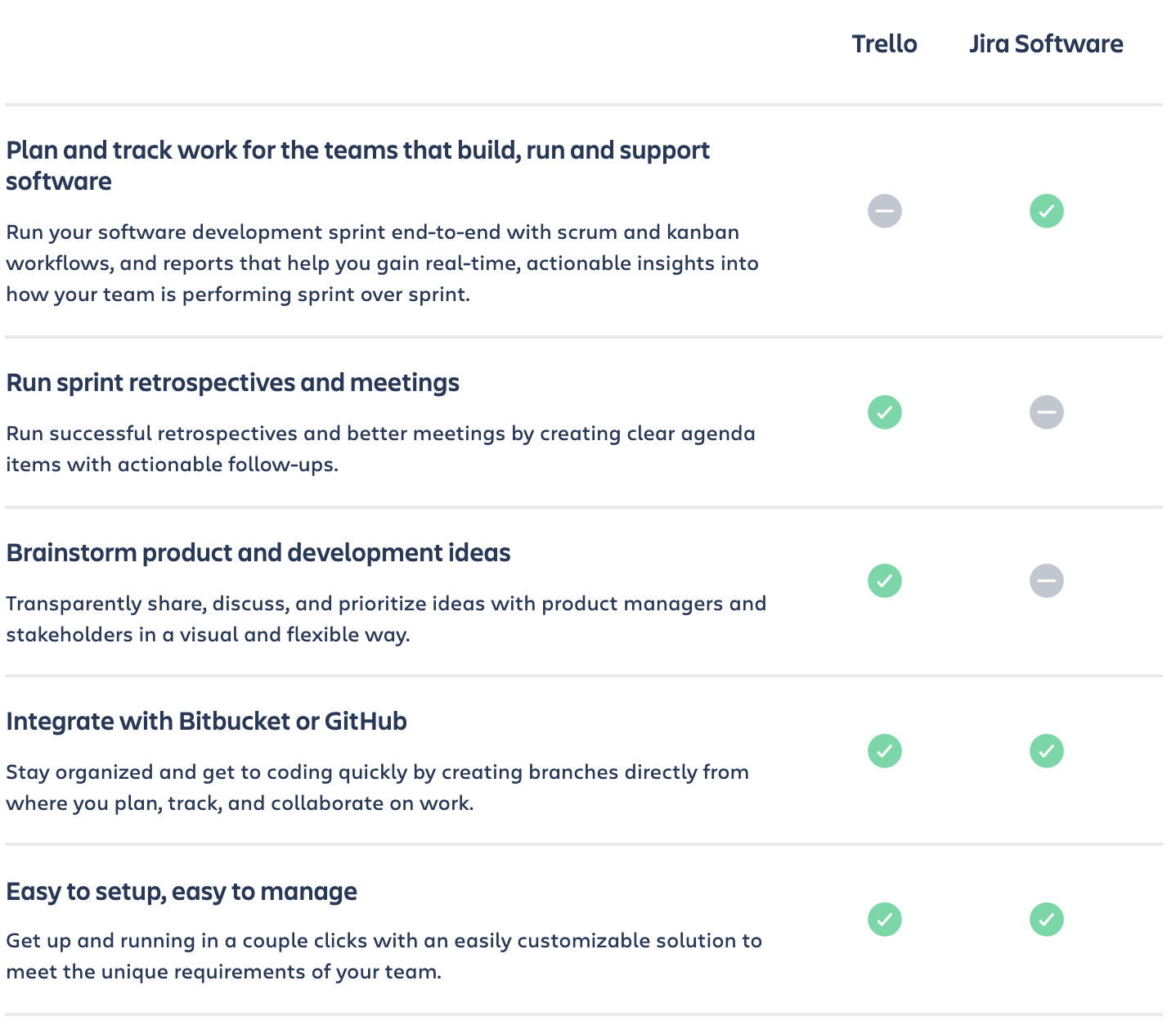
Workzone
As a Trello alternative, Workzone is most similar to Wrike. This is because both of these options make use of Gantt charts, instead of a kanban approach to project management. Gantt charts focus on the timeline over which you’ll complete the project.
Workzone is set apart by its features that aim to improve user focus. First, there is an option for users to receive daily emails with a list of tasks they need to complete that day. This ties in with the time-centric approach Workzone takes to project management. Also, Workzone gives managers the option to pick and choose who sees which tasks, making sure that users stay focused on their own tasks alone. These two features aim to trim the user’s focus only to what they need to complete.
One big downside to Workzone is the absence of an Android or iOS app. This is something that is very important to a large portion of clients and could be a deal-breaker for some. If you plan on utilizing your project management tool via mobile, you may want to seek a different Trello alternative.
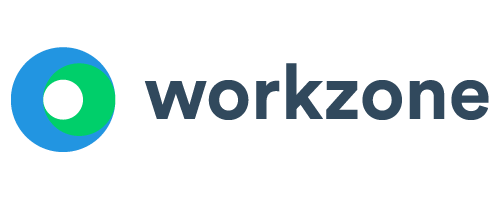
Workzone is great for those who want to cut out distractions.
Project Thinking vs. Process Thinking
While Trello can be a very useful tool, users need to ask themselves whether it is the right tool for what their business is doing. If you’re seeking a Trello alternative, you’ve likely already asked yourself this question.
Trello is a project management tool and a project management tool alone. Remember when I described projects as a “temporary venture that aims to create a unique product, service, or result”? Well there is another distinct business term that many confuse with projects: repeatable processes.
A repeatable business process is a set of actions that can be easily done again and again and again. These are things that worked in the past and that will add value to a business in the future. If you working more with processes, you may benefit from seeking a Trello alternative.
Note the distinction: projects are temporary and unique while processes are done over and over and over again. Some repeatable processes in a business include things like managing deliveries, assembling products, or onboarding workers. Consider this last example. Each time a business onboards a new worker, they must:
- Prepare & hand out the right paperwork
- Assign them a role in the company
- Prepare all of their tech — access to communication, project management tools, etc.
- Prepare the work station
- Introduce to their team & colleagues
A business will do this process dozens or hundreds of times throughout its lifetime. For repeatable processes, a better alternative to project management tools are business process management, or workflow tools.
While project management tools make unique, one-off projects more organized, workflow tools aim to make the mundane repeatable processes in a company go more smoothly. Those who are dealing with processes should seek a workflow-based Trello alternative.
Tallyfy —A Different Kind of Trello Alternative
Teams that make use of project management tools, like Trello, often find that they are employing these tools for things they are doing over and over and over again, not one-off projects. Many organizations mistakenly use project management tools for business processes.
Tallyfy offers a way to make the mundane and potentially disorganized processes in a business simple and organized.
Unlike project management tools like Trello, Tallyfy templates are repeatedly used on a monthly, weekly, daily, or even hourly basis. While a whole new board may need to be made for every single project with Trello, the same process template can be used millions of times with Tallyfy. So, you should ask yourself, “am I dealing with projects or processes?” If the answer is processes, then Tallyfy may serve as the perfect Trello alternative for your team.
Tallyfy, Summarized
When something’s done over and over again in your business, project management tools require you to approach the task like it’s never been done before. With Tallyfy, you can create a template that you’ll use any number of times for the same set of tasks.
Let me show you how.
Let’s say you own a property that you lease to Airbnb guests for short stays. Each time a guest is going to stay, there is a series of steps you need to complete to prepare for the guests. With Tallyfy, you can make a template that you use each time to make sure you never forget a task when preparing for guests.
Here’s an empty template named “Airbnb Guest Prep.”
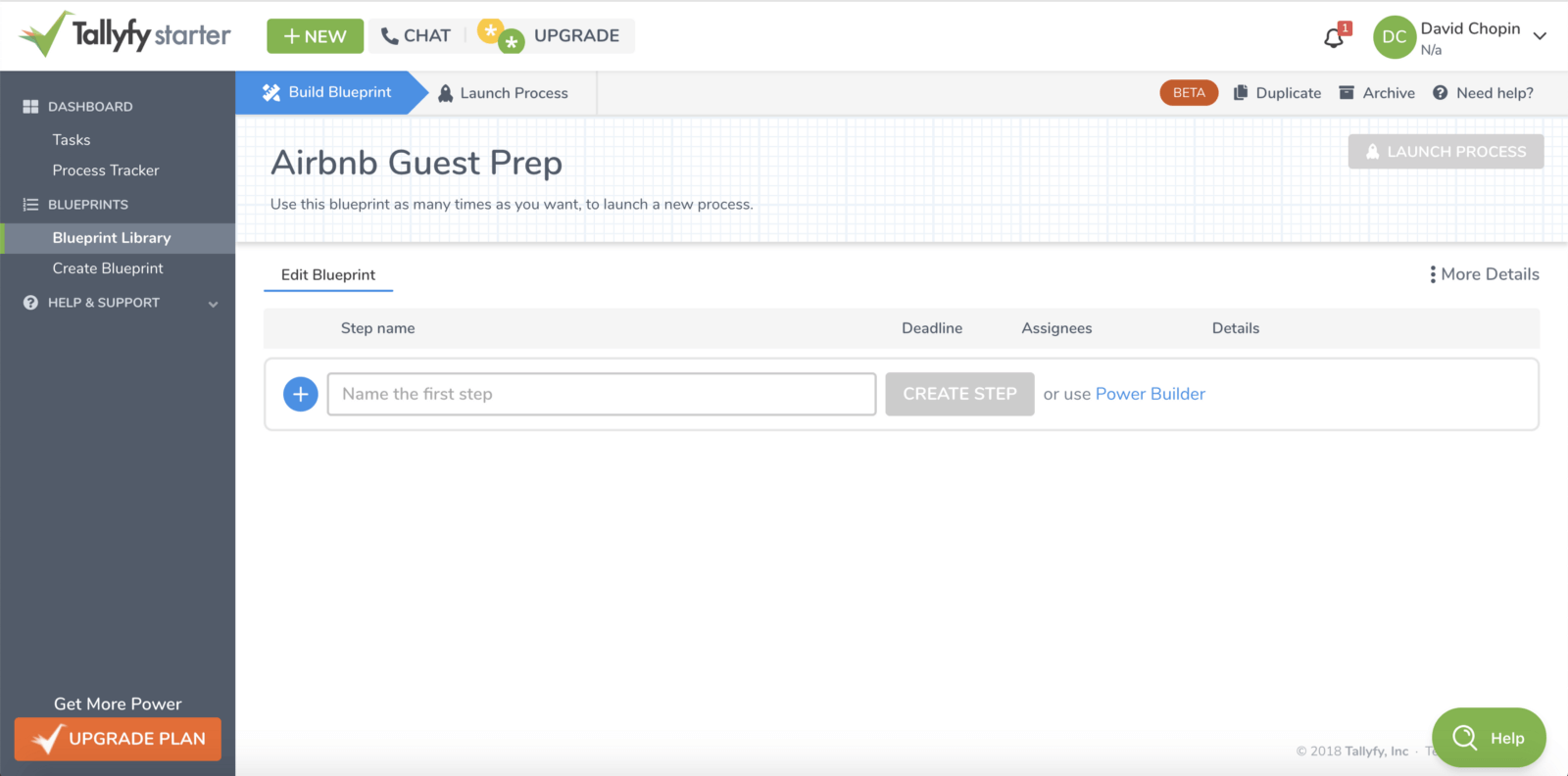
An empty Tallyfy template for Airbnb property owners.
I can fill this template with a bunch of steps that I know I need to do before each guest stays.
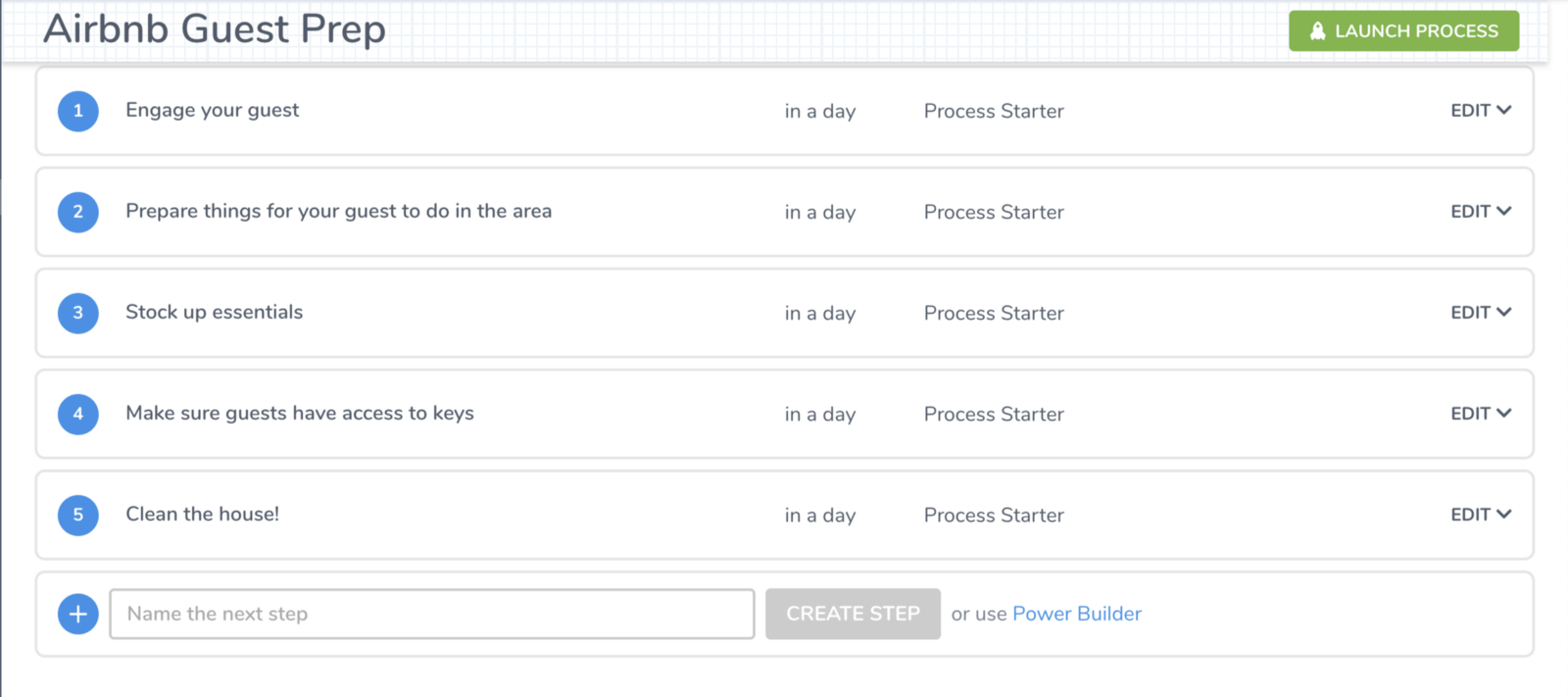
I’ve created a series of steps I need to do before my next guest comes.
I can make each step more specific by adding step descriptions, step rules, deadlines, and tagging other users that should see the step. If I have people that do the cleaning for me, I can assign the cleaning task to them.

Making my template more specific.
From here, we can launch the process and now its ready to use each time we have to prepare for a guest! Every step I complete, I mark it off just like a grocery list.
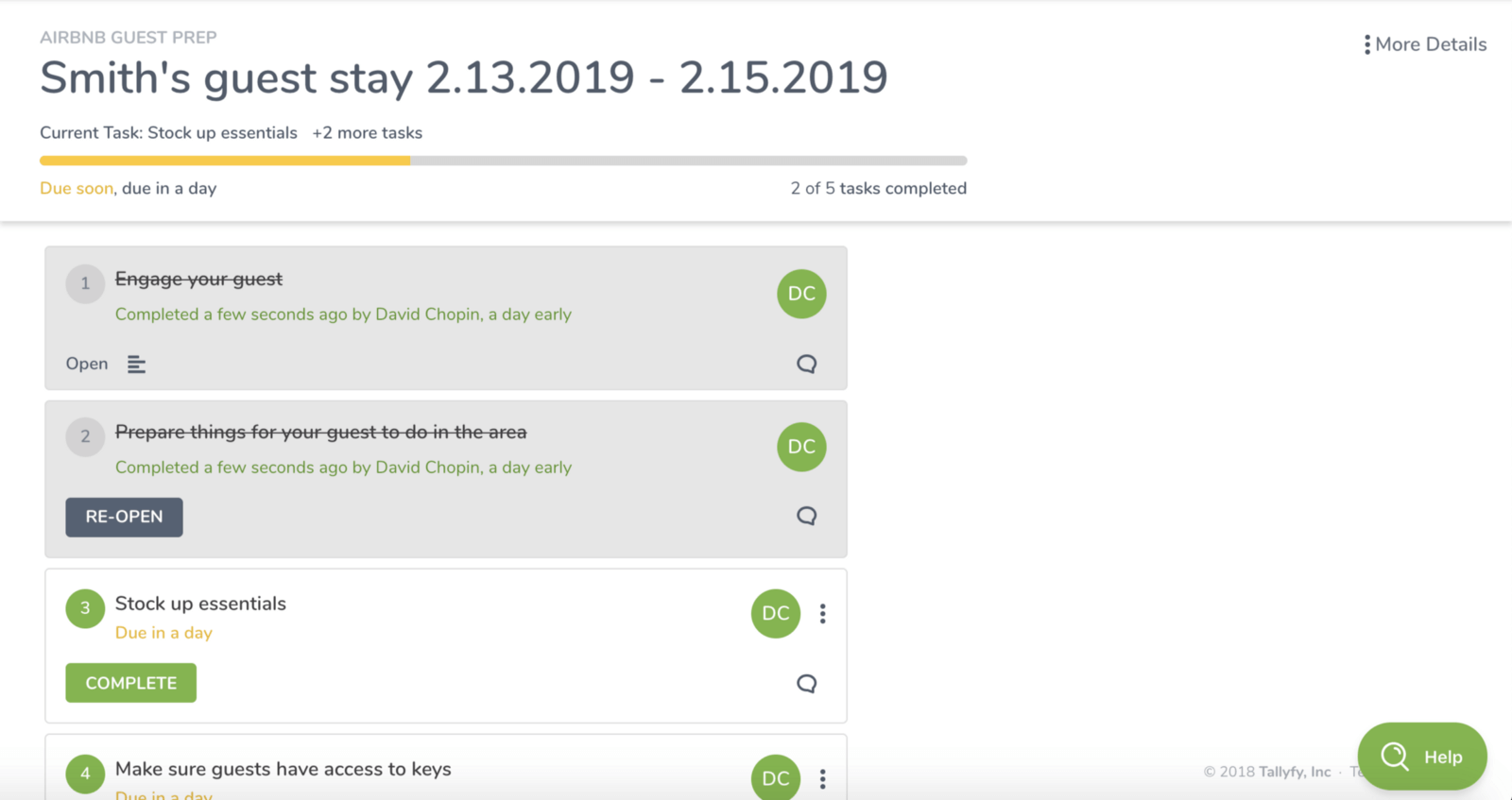
I launched this template for a fictional family’s stay at my property. I’m almost half way done!
When the Smiths have completed their stay and I have to prepare for the Jones’s visit, which is next week, I can launch the same template to get ready for the Jones’s stay.
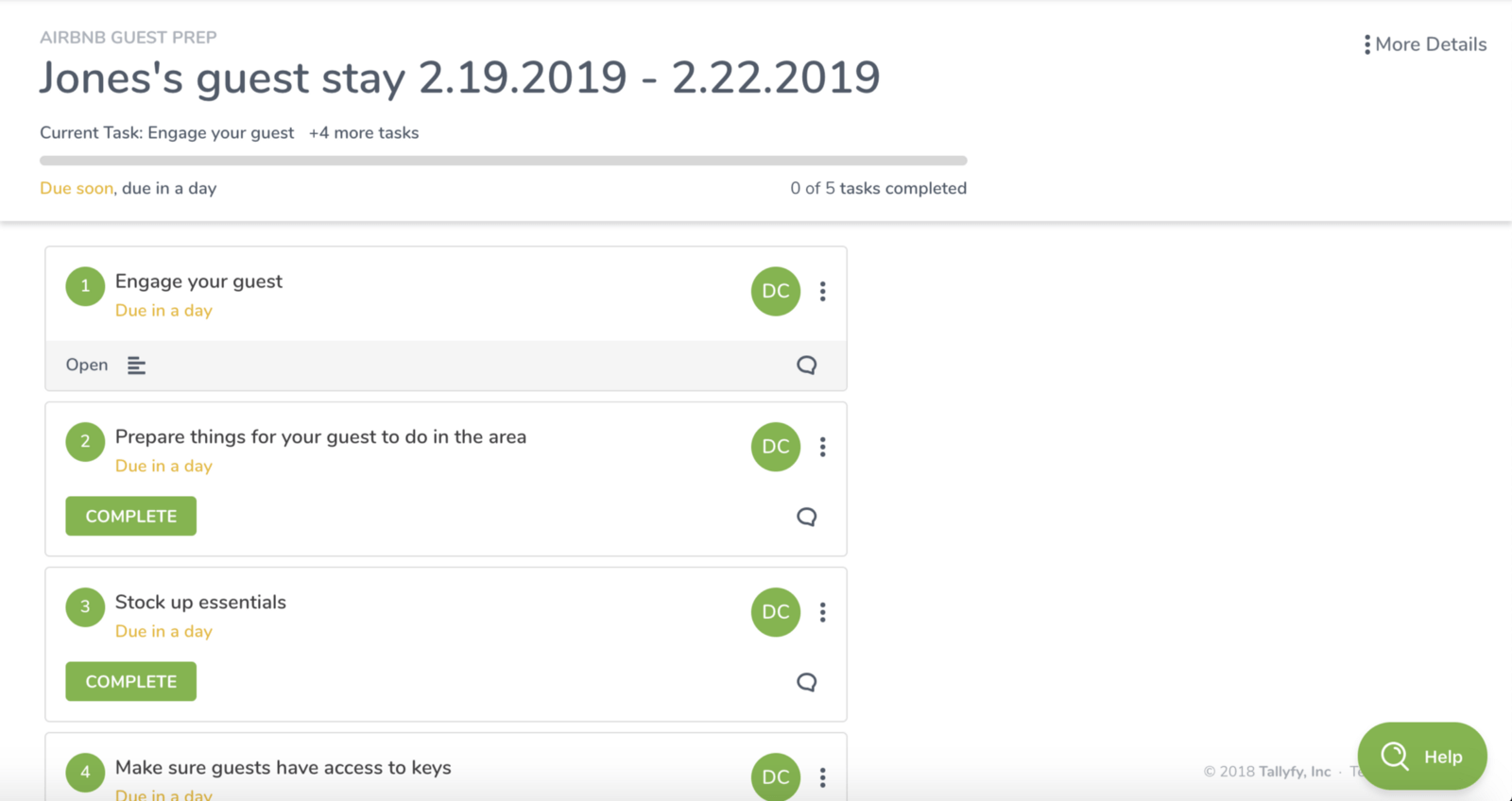
I haven’t started working on preparing for the Jones family because they are coming next week. But, I have my checklist ready to go!
Process Management — Made Simple
I made this template in less than 5 minutes, but I can use it for the rest of my AirBnB career to make sure I’m prepared to make each guest’s stay mind blowingly great. For this reason, Tallyfy serves as a perfect Trello alternative for those that are doing the same process over and over again.
It’s easy to see how Tallyfy templates can scale to businesses for on boarding new workers, following up with clients, etc. Your team may find that another project management tool serves as the best Trello alternative option. But if you now know that your team is more process-focused than project-focused, Tallyfy is the perfect Trello alternative for you!
Learn more about how project management compares to process thinking by clicking here
If you want to run processes – you need Tallyfy

